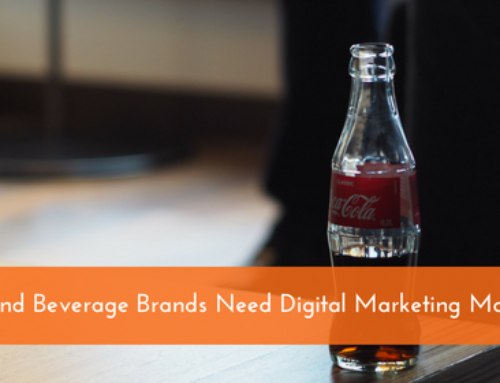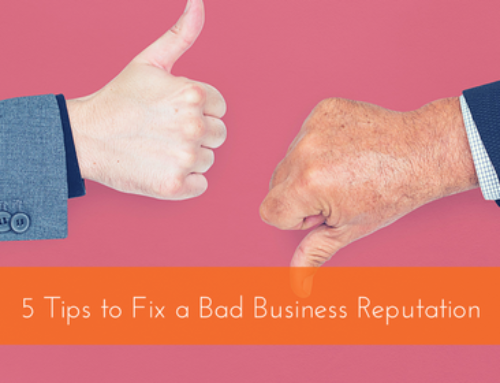For just a moment, think about those horrifying American Idol auditions the network once gleefully aired. You know the ones—where the singer could walk through the door with swagger, brag for a few minutes about how amazing he was, and then proceed to screech the house down in a ten-second audition, because that’s the longest the judges could listen without wanting to cover their ears.
What does this have to do with branding, you ask? Well, when developing your brand, your voice has a big part to play. How you communicate your values, your mission, your unique value—all of this relies on what you sound like to your customers.
What Buyers Hear
You can tell your buyers what your brand is until you’re blue in the face, but that doesn’t matter one bit. Like that poor guy who auditioned for American Idol, you could believe your brand is the best out there, while your judging audience hears something very different. It’s not what you say you are; it’s what your audience says you are.
Is your audience ready to cut your performance short?
Analyzing Your Brand Voice
Vocal artists often break down the characteristics of the voice in several categories. Believe it or not, some of these same categories could be applied to your brand voice. To help you follow along, here are a few of the characteristics a vocal judge might listen for:
- Tone
- Clarity
- Focus
- Authenticity
You may be starting to see the correlation, but we’ll break it down a little more so you can really hone your craft.
Tone
Some of the most successful brands have a tight grasp on their tone, and they never let it slip. Your tone will convey many things: personality, values, convictions. No two brands will have the same tone, and if they do, one probably needs to examine point number four: authenticity. But we’ll get there.
Your brand’s tone will be evident through your messaging. Witty and engaging. Direct and no-nonsense. Snooty and discriminating. Warm and welcoming. Comforting and supportive. Fresh and fun. Maybe, just maybe, you take a chance on your audience understanding your singular sense of humor and try both snooty and fun. That one worked for Old Spice’s major rebrand, right?
Clarity
A muddled and confused brand voice does nothing but confuse your buyers. Once you know who you are, what you stand for, and what your unique selling proposition is, you should be very clear in your messaging.
Let’s consider Target’s brand voice. This company has been around for decades, surviving the giant that is Walmart only after a complete rebrand. It was during that rebrand that Target really found its voice: trendy, helpful, and often humorous. The tone is wonderful and draws the company’s exact buyer personas to the stores, but it’s the clarity of the message that drives the sales.
Remember Target’s “Around for Good” campaign from a few years ago? This string of marketing messages wasn’t focused on selling any particular products; it wasn’t focused on selling anything at all, really. Target very clearly stated that they wanted to give back to the community in various ways—through donations to education and environmental causes.
The Chief Marketing Officer, Jeff Jones, said, “We want our guests to see and feel that when they shop at Target, they’re part of something bigger than a transaction.” You can’t get clearer than that.
Focus
Upon first glance, clarity and focus may seem similar, but they’re actually very different. Clarity describes the message. Focus is directed to the audience. If you’re not fully aware of your buyer personas as you craft your brand voice, then you’ll sound like screeches and warbles to the people who hear you. Okay, so it may not be that bad, but your potential buyers won’t be interested in listening through the whole song.
Online retailer ModCloth has some of the most focused messaging I’ve seen. The audience is clear upon first visit to the website, with language and tone directly focused on young women with trendy, quirky style. Through images, engaging copy, and unique offers, the company directly appeals to their intended audience. Their focus on unique fashion tells women of all shapes, sizes, and styles that anything goes, and everyone is beautiful. They never muddle that message with abrasive or critical opinion pieces, or fashions for men or boys. The focus is immediately clear.
Authenticity
If you’ve ever heard an impressionist attempting to sound like Christina Aguilera, then you have some idea how painful an inauthentic brand voice can be. Sure, a talented few might manage to sound spot-on, but at the end of the day, they’re still no Christina.
Your audience will know if your voice isn’t authentic. They’ll hear the wobbles and flubs as you struggle to sound like something you’re not. Your best bet is to use your real brand voice, the one you find through deep searches of your brand identity, your target customers, your unique value, and your company’s mission. When your audience hears your true voice, they will respond.
Learn more about how your brand voice fits into the marketing journey with my forthcoming book, Your Marketing Roadmap, now available for pre-order on Amazon.
A version of this blog appeared in two parts on https://www.nawbo.org/orange-county/membership.






